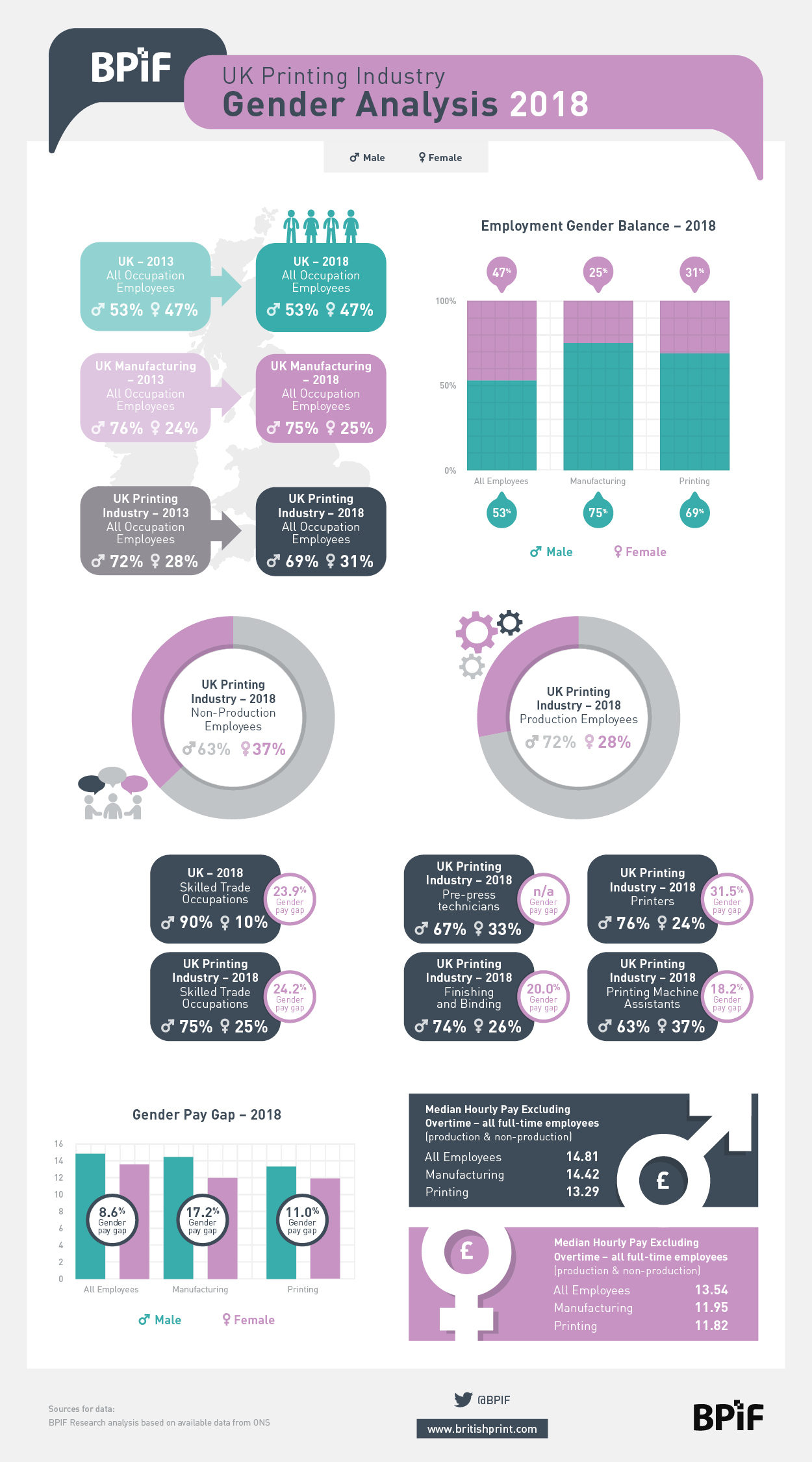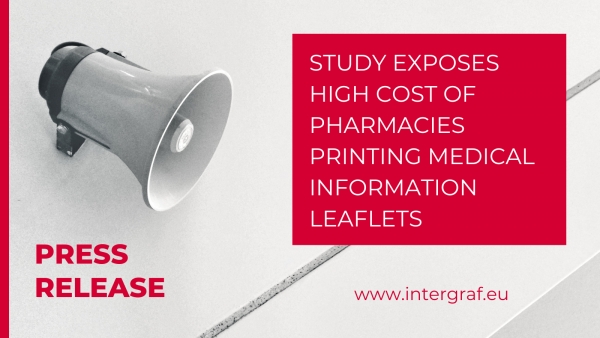8 March 2019

UK Printing Industry – gender analysis 2018
For International Women's Day, the BPIF did some research to see exactly where the industry stands in terms of gender split and pay.
Gender Balance
Looking firstly at the proportions of male and female employees in the UK economy - the UK breakdown for all employees is 53% male and 47% female. Within manufacturing (of which the printing industry is part) is 75% male and 25% female. However, the UK printing industry - with 69% male and 31% female - has greater female representation than the manufacturing total (though does remain well below the national balance).
A further breakdown of gender balance within the UK printing industry reveals that 63% of non-production employees (sales, admin, managers, directors etc.) are male and 37% female, whereas fewer (28%) production employees are female. The production employee gender balance breaks down further - 25% of skilled trade occupations within the UK printing industry (pre-press technicians, printers, and finishing and binding operatives) are female, this compares to a female proportion of only 10% amongst all skilled trade occupations in the UK economy i.e. compare to other skilled occupations the UK printing industry has much greater female representation. Female representation is greater in the printing machine assistants category - which in reality will include a mix of semi and unskilled printing and finishing occupations that haven't been included in the skilled trades categories.
Gender Pay Gap
The gender pay gap is calculated as the difference between average (median) hourly earnings (excluding overtime) of men and women as a proportion of average hourly earnings (excluding overtime) of men's earnings. For example, a 4.0% gender pay gap denotes that women earn 4.0% less per hour, on average, than men. Conversely, a negative 4.0% gender pay gap denotes that women earn 4.0% more, on average, then men.
The gender pay gap fell from 2017 to 2018, to stand at 8.6% among full-time employees. The gap among all employees is higher (17.9%), driven by more women working in part-time jobs, which are lower paid (an average hourly rate is £9.36 compared with £14.31, excluding overtime, for full-time jobs).
Within the UK printing industry the gender pay gap is 11% - greater than the national figure (8.6%) but lower than the manufacturing disparity of 17.2%; this is for all full-time employees (i.e. includes directors, managers, office staff and production employees). The UK printing industry gender pay disparity comes primarily from the production occupations - the gender pay gap for the printing industry skilled trade occupations is 24.2%.
At a national level, the 2018 gender pay gap for all full-time employees is close to zero between the ages of 18 and 39 years. From the age of 40 years, it widens.
When looking at the gender pay gap over time, all age groups have seen narrowing gaps since 1997 apart from those aged 60 years and over. In this age group, the gender pay gap has widened over the past 10 years after narrowing between 1997 and 2004. Age groups 30 to 39 and 40 to 49 years have witnessed the most significant narrowing in the gender pay gap since 1997.
Source: BPIF Research and ONS
Victoria Print Network UK - supporting gender balance in the UK print space
A LinkedIn group has been set up to connect women working in the UK print industry to share experiences and provide support. To promote gender balance and encourage business to consider the benefits of gender diversity. Open to men and women - we all have a part to play to support and encourage gender diversity. The group can be accessed on the link provided below.
Downloads Intergraf Economic News (Paper Prices) - March 2024
Intergraf Economic News (Paper Prices) - March 2024
18 March 2024
Access the latest edition of the Economic Newsletter for the European Printing Industry for data on paper consumption, and pricing data for pulp, paper and recovered paper. Data for packaging papers and board is also available with this edition.
 STUDY EXPOSES HIGH COST OF PHARMACIES PRINTING MEDICAL INFORMATION LEAFLETS
STUDY EXPOSES HIGH COST OF PHARMACIES PRINTING MEDICAL INFORMATION LEAFLETS
7 March 2024
Intergraf welcomes the release of a study by our partner MLPS (Medical Leaflet = Patient Safety), a subgroup of the European Carton Manufacturers Association (ECMA) shedding light on the potential economic costs associated with the proposed use of Print on Demand (PoD) leaflets in the pharmaceutical legislation revision.

The BPIF is the printing industries champion. By becoming a member you join a diverse and influential community. We help you solve business problems, connect you to new customers and suppliers and make your voice heard in government.
Call 01676 526030









